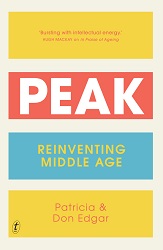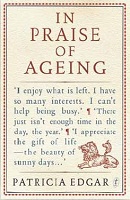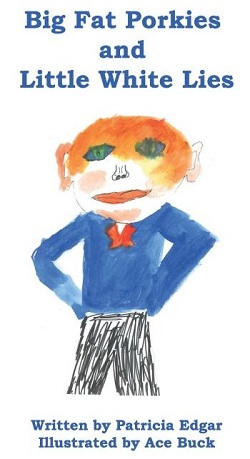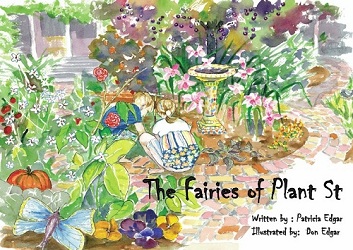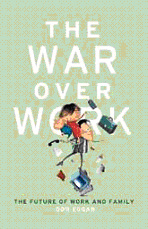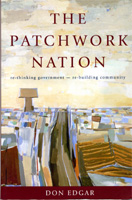Dorothy Pash Oration on Ageing
Dr. Don Edgar
COTA, South Australia, 20 November, 2002
Why fear an aging population? They are the future.
The scaremongers have been at it, but they've missed the point. They're worried about the costs of dying and have missed the benefits of living longer.
Most politicians, and the media, have focused on the likely cost of an aging population - a blowout in the pharmaceutical benefits scheme, higher nursing home and hospital costs, fewer 'productive' young people in the labor force and thus an unhealthy 'dependency ratio', with the old becoming a burden on the younger workers of the future.
What they should really be scared about is the fact that the old, the aged, the elderly, the seniors, our Elders, the Third Generation, or the Sageing Generation - call them by what euphemism you will - in fact, are the future, and a more feisty, well-educated, healthy, wealthy and politically active lot the world has never before seen.
My message tonight is: "Don't count us out - the Baby Boomers will stir another revolution." Politicians and youthful planners, advertisers and corporate managers watch out! They will not tolerate (or vote for) anyone, or any party, that considers them a nuisance, a burden to be put on the scrapheap of history. The aged and aging are already making history. As I say, they are the future.
Just look at the figures. Demographic statistics can be boring and confusing, but they describe real people, people like you and me, like our sons and daughters, real people living out the 'rest of their lives' in exactly the same way that a five year old or a 26 year old lives out the 'rest of their lives', and the rest of our lives is something that we all value. This generation of people getting older will make the most of it.
Australia already has 2.3 million people aged over 65. I am one of them. There will be 5 million of us another 20 years from now. Those aged between 45 and 65 will total 5.9 million by 2031. That adds up to almost half the projected total population of Australia, so we're not talking about a minority who can be treated like lepers and fed the slops.
The reason for such an increase is partly because of a declining birth rate, but also because people like me are living longer, and because the group we call the Baby Boomers (born between 1946 and 1965) will all have hit 65 plus by 2031 - only two decades away, and their offspring are not in the mood to marry and have children. By mid-century, one in every three will be aged over 60. One in every four will be 65 plus. And ten per cent will be over 80 and still going strong. Even if we take the median age (half below and half above), Australians will have moved from a median of 27.5 years back in 1971, to a median age of 46 years by 2051. Given that the ILO and the ABS now classify anyone aged 45+ who is unemployed as the 'older jobless', that's over half the population that could be called 'old'. Our attitudes and our language about aging have got to change.
I won't have time to spell out all the implications of an aging population, but I shall try to suggest some of the main avenues of change they are likely to drive. For me, the future looks exciting, not bleak, because the very generation that was told, 'Don't trust anyone over 30', has already forged a social revolution in the way we live, work and form relationships, and they will do so again, but with age, wisdom and experience on their side to argue a case for a more humane and liveable society.
Though many of us have become trapped in our own propaganda about youth (because youth were the majority, we fed the market and the media with our demands, and we still want to turn a blind eye to the swelling paunch, the thinning hair and the wrinkly skin), as the world turns old around us, reality will kick in and we will demand our rights. We will be the ones with money to spare in the market, we will be the labor force in short supply, we will be the service users, new house hunters and the leisure-seekers and, above all else, we will be the majority of voters demanding a better deal from the political system.
Family relationships
It is interesting to contemplate how family relationships will look in 30 years' time. Remember, it was this group, the Baby Boomers, who were in their twenties during the Flower Power sexual and civil rights revolutions of the sixties and seventies. They may have settled down, but inside lies a heart ready to try anything. And their parents, the already-aged, are using their affluence and new-found freedoms to explore as well.
Only 5% of those now aged over 65 have never been married. Most of them had children during the post-War years, and have an extended family network of support. Even though people are more mobile than ever, many of their offspring will have married, divorced and remarried, and although the aged tend to drift to 'lifestyle' areas on the coast, the evidence shows a lot of daily and weekly contact between the generations. We know grandparents still do about 80% of the child minding in Australia, and both financial and emotional help flow more from the old to the young, than from the young to the old.
However, with over a third of marriages during the last few decades having ended in divorce, and with more of the currently married likely to separate or divorce, the coming generation of older persons will have very different family relationships.
In one sense, there could be lots of lonely, isolated people, having few blood ties to rely on when in need, calling on unreliable friendship networks for support. And we know men are less likely to have such friendship networks than women, so an aging Australia is a land of lonely old men outnumbered by widowed, but busily socialising, old women.
On the other hand, these Oldies will have experienced multiple relationships, and will be seeking new ones. They will be the portfolio workers who operate independently and will not be satisfied with a lonely life. In the USA, there is already an awakening sexual revolution among the aged. The National Council on Aging found half of those over age 60 who are sexually active say they enjoy it more than they did in their 40s. In huge retirement complexes like 'Leisure World' in Laguna Hills, California, there are singles clubs, dance groups, weekly mixers and a newsletter column answering seniors' questions about sexual relationships. There is a new delectation for life, a renewed intimacy, as older people decide (with Dorothy Sayers) that,
"As I grow older and older
And totter towards the tomb,
I find I care less and less
Who goes to bed with whom."
With about 28% of those now in their twenties and thirties unlikely to ever marry or have children, more of them will stay dependent on aging parents for a longer time. If aging couples are still stuck with singles at home, they'll be wishing desperately to be allowed some time alone as a couple. And these singles who never marry or have children will form a new group of older persons another thirty or so years down the track, reliant on friends for support and succour in their old age.
But even divorce does not necessarily mean an end to family ties. It seems already to be giving rise to a new family form - the 'Lattice Family' - where multiple parents, grandparents, partners, siblings, step-siblings, half-siblings all get on pretty well with one another and meet on good terms, serving as a wonderful resource of human and social capital for the young. The extended family at a distance is a great plus, compared with the intrusion and bickering of what some lament as the fading extended family of old.
Housing
Such changes in family relationships will also drive changes in housing policy and urban planning. Much of the inner-city high-rise development is based on older couples wanting more convenient space, close to amenities. The Renewed Oldies want smaller housing units, preferably close to their families, but not with enough bedrooms to allow the whole family to descend on them to stay. Enough is enough. Rather than move to the inner city, many would prefer high density housing close to their original neighborhood, so planning authorities and local governments will have to get used to that.
But they want it well designed. And they want space. Not for them the box-sized bedrooms, the miniscule kitchen, the lack of cupboard space. They may downsize possessions, but they still want to entertain and enjoy their hobbies. They will be looking for doors wide enough so a future wheelchair can go through, for light fittings they can reach without a ladder, for lever taps that don't hurt you to turn on, balconies you can actually sit on and for environment-friendly energy sources. They want a front door feel to the place, and they do want car parking space.
The trouble is, architects and planners are often young people, operating on stereotyped assumptions about what old people need, or at least operating on minimal cost construction. The result is a lot of future high-rise slums that no-one, either young or old, will want to live in.
Community Services
And they will want easy access to amenities, such as a local store, chemist, doctor's surgery, coffee shops, bus stops and parking for their own cars. They may not want their own garden, but they'll want a park to sit in and enjoy the sun nearby, and they'll want walking paths, exercise facilities rather than costly gyms, and swimming pools bigger than a duck pond on the twenty-first floor.
This means that an aging population will force a revolution in the way we think of 'community services'. In fact, they won't want 'servicing', they'll want 'resourcing'. They won't need organisations, government or non-government, that 'provide' for them in fixed ways, take it or leave it. They will need and demand amenities, resources they can draw on as the need arises They will want a community, a neighborhood that is designed to be friendly to the older person, well lit parks, signs on shops and bus stops that are big enough to read without your glasses on, benches under shelter where you can rest or just sit and watch the passing parade, information booths in shopping centres and streets that give sensible directions to services and sources of help.
The old approach to government will have to go. Top-down, one-size-fits-all services for the aged (or for anyone else) will have to give way to flexible provision of resources which people can use in their own way, in their own time, if and when they need them. The logic of a post-modern, globalised world is a logic based on complexity and diversity. We can no longer put people into categories, label them, and design services specifically for them as categories. We must stop talking about the aged, or ageing, of the 'old', as if they were, are, or will be one group with the same characteristics.
For a start, older men and women will need different things. Of the 'old old', there will be only 52 men to every 100 women, but the differences in need start well before that. Men may welcome home-based support, but resist being made to meet as a group, or have busy-body home visitors who intrude into their lives.
Aging ethnic people need different forms of assistance from English-speakers. Already, a quarter of those aged 50-70 do not speak English well. At 65, some people need physical help; others are as fit as they were at 40.
At any age past 55, some will be retired from full-time jobs, others will be working part-time, others working from home, others will mix paid work with voluntary work and personal leisure. You can't hold a picture in your mind of 'the aged', 'the ageing', or of 'older persons', or even the nicer-sounding 'Elders' that would apply to everyone. Some of our aging population will be wise, the Elders of the tribe, the 'Sageing Generation'. But others will be dickheads, and always have been. So let's not romanticise either.
But we can predict that policies based on the notion of family and community care will not suffice. It is one of the right ways to go, but it won't work for everyone. As I've already suggested, the nature of family ties will be very different from now. The young are moving out of rural regions, to be educated and to find jobs and lifestyle, so family care will be less available. Many older people are, sadly, moving out of their home communities into supposed 'lifestyle' regions, only to find there are no services, fewer facilities they can access, and not much of a lifestyle anyway.
Regional inequalities will thus be a feature of future aged care, and governments must ensure equity without uniformity. That means a much more local, more democratically responsive approach to the provision of any sort of services for the aged.
The aging population, especially the Baby Boomers, are the arch individualists of the new age, not conservative conformists willing to accept blanket coverage. We have to devise new ways of engaging them in planning and running the sorts of services that suit them, in their unique communities, and in their own unique ways.
The workplace
Perhaps the biggest revolution that will come about because of an aging population will be in the workplace. Already, the Information Age has made us realise we may do work, yet not have a 'job'. Many of us are already 'portfolio workers', global wanderers selling our skills and expertise to whoever will pay, wherever they may be. The 'Grey Nomads' of the future are less likely to be old couples wandering the outback in their caravans, than they will be experienced workers operating flexibly on a national and international scale.
The workplace is probably the most resistant institution of all. Designed for an industrial age, where hierarchy, authority, bureaucratic specialisation and male skills were dominant, and still run largely by male managers who have not understood how much the world has changed, most workplaces today are dysfunctional and damaging to quality of life. The notion that workplaces are becoming 'family-friendly' is a joke. A few are. But most still expect their employees to turn up at the same time every day, work long hours (many of the extra hours without pay), work in the same way as everyone else regardless of differing styles and skills. Ask for time off to care for a sick child, or take poor old Mum to the doctor; ask for a flexible time schedule; ask to be allowed to work from home a couple of days a week or, worse, to job-share with someone you know you could cooperate with; and you're already on the 'Mummy Track' or the 'Daddy Track', not worth promoting, not really committed to the firm.
The evidence is that most managers (young and gung-ho) are ignorant of the research on employee morale and performance, are more concerned with face-work, presence in the office, than with real performance, want to have someone there to supervise, not develop the skills to manage a diverse and flexible and scattered workforce. Remember the Drake survey of 1999, which found of 500 HR managers, not one would employ anyone over the age of 50, and 65% would prefer to retrench those older than 45 rather than anyone younger, regardless of skills and performance.
A similar Harris Poll in the USA in 2000, found that 80% of managers agreed older workers were more reliable, had less turnover and 71% agreed older workers had as much ability to acquire new skills as younger workers. But they would not hire older workers, and would not retain them. What is wrong with these people? Have they not heard of Libby Brook's research finding that a retained older worker saves at least $2000 in hiring, interviewing and training costs? Worse, most of those older workers who are retrenched, or downsized, or encouraged to retire early, accept their fate, bemoan it privately, but do nothing about it publicly, their own worst enemies.
Fortunately, time is running out for such outmoded attitudes and work practices. A low birthrate, and a government reluctant to boost immigration, mean one thing clearly. The supply of labor is drying up, and the older worker will be the new unionist of the future, able to demand and get better pay and working conditions that suit his/her older stage of life.
In Australia, already one in every five people in the labor force is aged 45 or more. From now till 2016, our labor force will grow by 1.5 million and 81% of them will be over 45. In the USA, one in every seven workers is aged over 65, and some 80% of the Baby Boomers there say they plan to work well beyond age 65. A few firms, like Walmart, McDonalds and CUS Drugstores have come to realise older workers are good workers and have deliberate policies to hire older workers. In Australia by 2020, there will be no new growth in labor supply at all, with Tasmania, then South Australia, then Victoria and NSW dropping away first, and WA, NT and Queensland continuing to grow.
Perhaps a more potent argument for business is that not only will the Baby Boomers not stop consuming as the supply of labor dries up, but the aging population will be the backbone of the consumer economy. (Ross Gittens, The Age 4 April, 2001) Seniors already control 48% of discretionary spending. 43% of new cars are bought by seniors. The net worth of American seniors is five times that of other Americans and the over 50s had a total net worth of $20 trillion. That's quite a lot of consumer power that our business leaders are going to have to target, instead of their customary favorite demographic of 18-49 year olds.
The Lucky Generation will leave a fortune in inheritance to the Baby Boomers now aging. In the USA, some companies like Borders Books, and Cracker Barrel restaurants have woken up. They are re-designing shops with sofas, good lighting, coffee and refreshments, helpers on tap to make customers feel as if they are in a 'third place', compared to work and home. Large-print menus, and a more homely atmosphere (including older waiters) target the older restaurant market. As I said earlier, some of us as we age, resist the notion of getting old, and buy the myth of youth, to our own detriment. Too many men resist taking a part-time or casual job because they want a 'real' job, full-time, thus missing out on a new experience, a new chance to reconstruct their working life.
The fact is that people retiring (at 55 or later) have higher levels of skill than school leavers or university graduates and businesses will have to compete to get the best workers available. They cannot afford to lose the experience, expertise and productivity of their older workers.
But these older workers will not want to continue to work in the rat race as it is structured presently. They will want to play a bit of golf; they will want to work flexibly from a home office; they will want to set aside blocks of time to travel with their partner; and they will demand the flexibility to manage a better quality of life than most employers today think is possible.
Even here, I need to sound a warning about generalising too much. You cannot have a policy that insists everyone stay at work past the age of 55, or 65. Nor should you penalise those who choose not to devote their later years to paid work. Everyone is different. Some of the aging do get tired, do get sick, do have other life priorities that should be respected. Just as we have discriminated against women in terms of pay levels and superannuation options, so too we must be careful not to discriminate against the older person wishing to do something other than paid work.
The preferable way to go, and one that I think will get wings in the near future, is to develop income policies round the concept of 'active citizenship'. We already have it in the form of mutual obligations - income support on condition of work, or training/education, or community activity. But the underlying premise is still a silly one - that full-time paid work is the ideal, the norm to which everyone (single Mums, parents with young children, the disabled, etc.) should subscribe. I certainly agree that no-one should be given public money for doing nothing, but most of these people are doing something. They are raising the next generation, caring for the old, studying, volunteering, networking through the community groups that make up the glue that holds a viable society together. And we should recognise those forms of 'work' as much as those that produce widgets, or those spent behind an office desk for pay. A citizen's wage would be preferable to a basic wage, because it suggests an active contribution to society is the point of all work, not simply the survival of the individual at a basic level.
Obviously, this has implications for the way education is conceived and offered. Vague notions of 'lifelong learning' mean nothing unless accompanied by structured opportunities to engage in lifelong learning. Schools should be seen as Family Learning Centres, where children and parents and older people engage together in developing the best brainpower possible. We don't need separate TAFE Colleges stressing narrow vocational skills (and we certainly don't need to return to the old lock-in system of technical versus high schools); what we need are Community Colleges where older secondary school students, employed adults and older people work together to transfer wisdom and experience across the generations. Actual places of work need to be more closely linked to schools and community colleges, not to push purely vocational learning, but to demonstrate the integral linkages between work practices and lifestyle quality, and to encourage a greater respect for the experience and practical know-how of older people.
That will mean a rethinking of our welfare, income-transfer system, based on periods of citizenship activity that would vary between education and training, caring for children, the disabled and the aged, periods of paid work with citizen sabbaticals in between, and an end to the fixed concept of a life course starting with school, then a job, then marriage and parenting, then retirement, then death. Instead, we would have a clear concept of active citizenship, in which education, training, lifelong learning, caring, volunteering, democratic engagement and service to the community are equally valuable and equally necessary. Times out of paid work would be supported by a citizen's wage. We would abolish altogether the concept of 'retirement'. No-one ever retires from life, except on the deathbed, and active engagement in society should be the goal and the central value of our entire democratic system.
Health
I have to end by giving health at least some mention. There is nothing more central to individual and social welfare than good health. Yet our system is based on treating ill-health, not on encouraging a healthy lifestyle. That too will change, as the Oldies realise that personal action rather than drugs will save them from premature aging, frailty and hospitalisation. Diet, fitness, prevention of ill health are the keys to a future of healthy aging.
Ironically, the government's Intergenerational Report was reported as if the major problem was rising pharmaceutical costs. If you look at it properly, it says Australia is 'well-placed' to meet the challenges of an aging population. The cost of the age pension, at 4.6% of GDP, is chicken feed. The percentage spent on disability and sole parents benefits will be unchanged over the next 40 years. The percent spent on unemployment will halve, and the amount spent on family benefits will fall by 40%. Australia has compulsory superannuation and a flat-rate, means-tested age pension. The biggest projected fiscal gap is in health care spending, and little of that will be caused by aging. The real cost blowout is in new health care technology (not just that which treats the old), an increased use of medical services and rising consumer demand.
The solution is to re-educate people about health care, especially doctors and medical specialists. We cannot be held ransom to those who prescribe drugs at the drop of a hat, because they get some payola from the drug companies, or those who put people unnecessarily into the new medical machines because it's fun to do so. We must not allow doctors to continue to ignore advice about good nutrition, exercise, physiotherapy, alternative medicine approaches, when we know our health as a community and as individuals could be improved at much lower cost. We must insist that school tuck shops, sandwich counters for lunch, fast food outlets start to provide healthier food, and that children in schools, and their parents, be better educated about the role of prevention in later health. We must reduce overcharging and wastage in the medical system, and that means tackling a hugely vested interest cabal in the medical profession allied with the big pharmaceutical companies and medical technologists.
It is my hope, and belief, that the generation which drove the cultural revolution of the 60s and 70s will be a wake-up to all of this. We are already driving a revolution in leisure pursuits, active holidaying, healthier food and exercise. But we need to push for a much better integrated approach to an aging society, one which accepts and welcomes the change, one which does not rely on ad hoc solutions to a bit more home and community care, a few more nursing homes, a few dollars here and there on home help or exercise programs.
As I have argued, the aged are the future. It is theirs, ours, for the making. And if politicians are too stupid to see the answers, employers too blind to see the advantages of an aging workforce, service providers too narrowly focused on providing what they think is good for us, we must seize the day, and make the revolution for ourselves. We need public investment for citizens. We need a policy agenda for inter-generational social inclusion, not private affluence and public squalor. We need active citizens' engagement, not passive provision or so-called 'inclusion' as an after-thought. As Young & Schuller (1990) put it, we must welcome the arrival of 'the Ageless Society', where people of every age are valued, engaged, involved in contributing actively to the wider good of our nation as a whole.
References:
Edgar, D. (2002), The Patchwork Nation: Rethinking government, Rebuilding community, Harper Collins
M. Young & T. Schuller (1990), Life After Work: The Arrival of the Ageless Society, Harper Collins
UK (2000), The Debate of the Aged: Values and Attitudes in an Ageing Society



